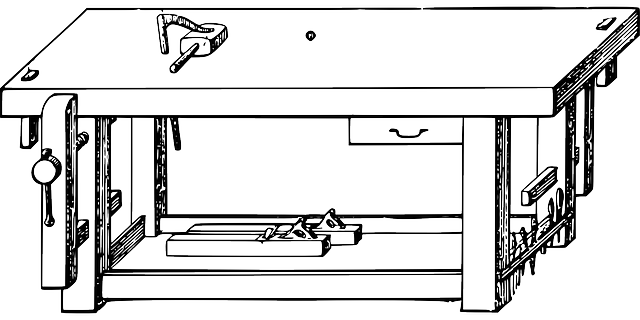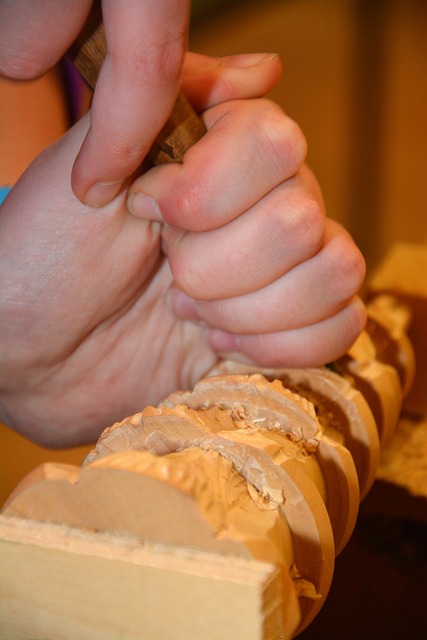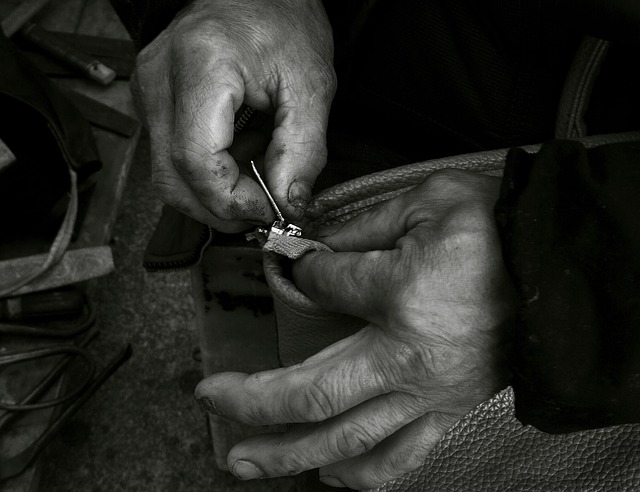A skilled carpenter excels in designing and crafting bespoke staircases, integrating artistic creativity with precise technical skills. The process starts with assessing the building's structure, user needs, and client preferences to ensure both aesthetic satisfaction and structural safety. Carpenters select from a range of materials, considering factors like durability, style, and safety standards. They employ advanced techniques in design and construction, utilizing CAD for precision and innovative materials like hardwoods and composites for modern applications. The carpenter's role is to transform the client's vision into reality, tailoring every aspect of the staircase to fit the available space, architectural style, and functional requirements.
Carpenters are adept at choosing the right wood for the project, taking into account environmental factors that could affect the staircase's integrity over time. They understand the unique properties of different woods, which influence both the aesthetic and longevity of the final product. Throughout history, carpenters have been instrumental in the evolution of staircases from simple functional elements to elaborate masterpieces reflecting societal values and cultural aesthetics. Today, they continue to adapt, incorporating new materials and technologies to meet changing tastes and societal needs, ensuring that their work remains both innovative and timeless.
When envisioning the perfect blend of functionality and elegance for a home, one element stands out—the staircase. This article delves into the artistry and craftsmanship that go into designing and building staircases and railings by skilled carpenters. We explore how these carpenters transform a basic architectural necessity into a focal point of aesthetic appeal and safety. From understanding the anatomy of a custom staircase to selecting the right materials, this read covers it all. It also takes readers on a historical journey of staircase aesthetics, showcases the importance of adhering to safety standards, and offers practical advice for maintenance and personalization. Carpenters play a pivotal role in enhancing home aesthetics, and their expertise ensures that every step taken is not just a movement but an experience. Join us as we highlight innovative techniques in staircase construction and the delicate balance between form and function in staircase design.
- Understanding the Craft of a Skilled Carpenter in Staircase Design
- The Anatomy of a Custom Staircase: From Concept to Reality
- Material Matters: Selecting the Right Wood for Your Staircase and Railings
- The Evolution of Staircase Aesthetics: A Journey Through Time
Understanding the Craft of a Skilled Carpenter in Staircase Design

A skilled carpenter brings a blend of artistry and precision to the craft of staircase design, transforming functional necessities into architectural focal points within a space. The process commences with a meticulous understanding of the building’s architecture and the intended user experience. Carpenters must assess factors such as available space, the flow of movement through the home, and the aesthetic preferences of the client. They select materials—ranging from traditional hardwoods to contemporary composites—that not only align with the desired style but also meet safety standards and structural requirements.
The design phase involves more than mere measurements and material choices; it encompasses a creative process where carpenturers envision how each component, from stringers and risers to treads and newels, will coalesce into a harmonious and functional unit. The intricate joinery and finishing techniques employed by carpenters ensure that every staircase is as durable as it is beautiful. Their expertise in balancing form with functionality allows homeowners to ascend safely while also making a statement with a bespoke staircase that reflects their personal taste and the character of their home.
The Anatomy of a Custom Staircase: From Concept to Reality

Crafting a bespoke staircase is a multifaceted endeavor that begins with the vision of a skilled carpenter. This process commences with an in-depth consultation where the carpenter gathers client requirements, considering spatial dimensions, architectural harmony, and functional needs. The carpenter’s expertise is pivotal in translating this initial concept into a precise design, taking into account the material selection, from robust hardwoods to contemporary metals, each with its unique aesthetic and structural properties.
Once the design phase concludes, the construction phase begins, where precision and craftsmanship are paramount. The carpenter meticulously constructs each component of the staircase, ensuring adherence to building codes and safety standards. This stage involves cutting, shaping, assembling, and fitting treads, risers, stringers, and handrails. The final assembly is a testament to the carpenter’s artistry, with each step and banister precisely measured and finished to perfection. The staircase transforms from a series of raw materials into a focal point of elegance and functionality within the home, exemplifying the carpenter’s skill in bringing the client’s vision to life through the anatomy of a custom staircase.
Material Matters: Selecting the Right Wood for Your Staircase and Railings

When embarking on a project to design and build staircases and railings, selecting the right wood is paramount for both aesthetics and functionality. A seasoned carpenter understands that each type of wood brings its unique characteristics to the construction, influencing the overall look and durability of the final product. Hardwoods such as oak, maple, and cherry are popular choices due to their strength and visual appeal. Oak, with its varying shades and grain patterns, offers a classic and robust option suitable for both traditional and contemporary designs. Maple’s fine texture and light to medium hues provide a clean and modern look, making it an excellent choice for minimalist homes. Cherry wood, known for its rich, reddish-brown color that deepens over time, is prized for its ability to complement a wide range of interior design styles.
In addition to aesthetics, the carpenter must consider the environmental conditions where the staircase and railings will be installed. For instance, regions with high humidity may require woods like mahogany or walnut, which are more resistant to warping and moisture. Climates prone to dryness might call for a denser wood like teak or ipe, which can retain their integrity under low humidity without cracking or splitting. The carpenter’s expertise in assessing local conditions and client preferences ensures the longevity and performance of the wooden structures they create. Choosing the right wood is a decision that balances the client’s vision with the practical demands of the project, a testament to the carpenter’s craftsmanship and dedication to quality.
The Evolution of Staircase Aesthetics: A Journey Through Time

Throughout history, staircases have been more than mere functional elements within architecture; they have been a reflection of cultural aesthetics and craftsmanship. The evolution of staircase design is a testament to the skill and creativity of carpenter artisans across different eras. In ancient civilizations, staircases were often straightforward, with simple lines that emphasized utility over ornamentation. Wooden steps leading to public forums or private residences were common in cultures ranging from the Greeks to the Egyptians, each with their unique building techniques and materials.
As societies progressed, so did the complexity and beauty of staircase designs. The Middle Ages saw the introduction of decorative elements, with stone and wood carvings becoming more intricate, reflecting religious motifs and symbolism. By the Renaissance, a new appreciation for humanist principles led to the design of grand staircases that served as centerpieces in palaces and grand homes. The Baroque period further embellished these structures with elaborate curves, ornamental banisters, and richly adorned railings, crafted by master carpenter guilds. This trend continued into the neoclassical era, where straight lines and classical elements dominated, followed by the Victorian age, which brought an eclectic mix of styles from Gothic to oriental influences, all executed by skilled carpentry hands.
In modern times, staircase aesthetics have diversified even further, with contemporary designs often influenced by minimalism and technological advancements. Carpenters today leverage computer-aided design (CAD) software to create custom, innovative solutions that combine functionality with sleek, modern looks. The use of new materials, such as glass, steel, and reclaimed wood, has expanded the possibilities for both residential and commercial spaces. As we look to the future, it is clear that staircases will continue to evolve, reflecting the changing tastes and needs of society, all thanks to the enduring craftsmanship of carpenters who remain at the forefront of design innovation.
In conclusion, the craft of a skilled carpenter transcends mere construction; it is an art form that breathes life into the vertical passageways of our homes—staircases. Through meticulous design and careful selection of materials, these artisans create functional pieces that also serve as elegant statements. From the initial concept to the final touches, each staircase and its accompanying railing tells a story, reflecting both the timeless elegance of traditional designs and the innovative spirit of modern aesthetics. Whether crafted from the robust oak or the sleek glass, these structures are more than just utilitarian; they are bespoke solutions that elevate the character of any space. As we appreciate the evolution of staircase design through history, it becomes clear that their significance lies not only in their functionality but also in their ability to enhance the beauty and individuality of a home. The enduring legacy of this craftsmanship ensures that for generations to come, carpenters will continue to design and build staircases and railings that are both functional and beautiful.



